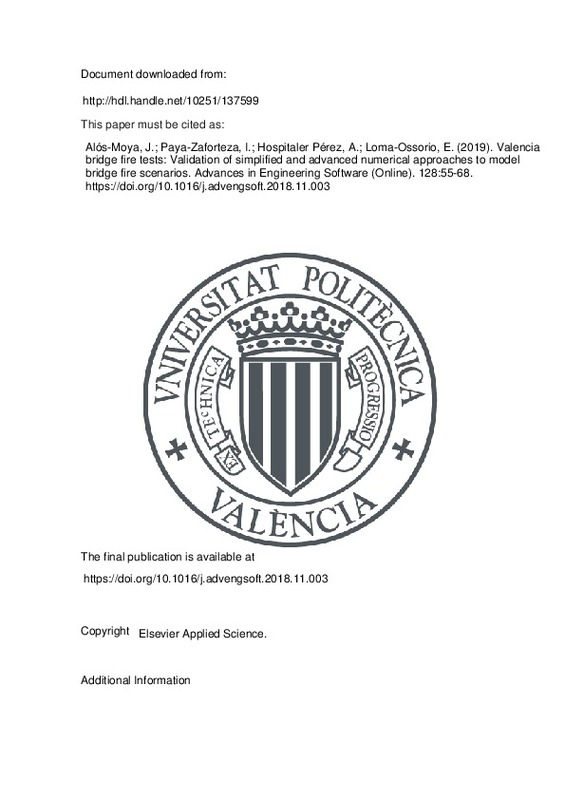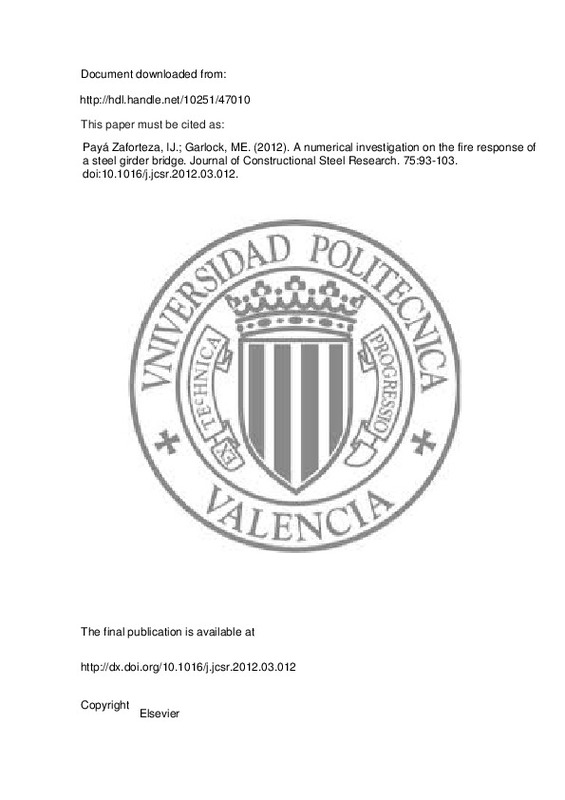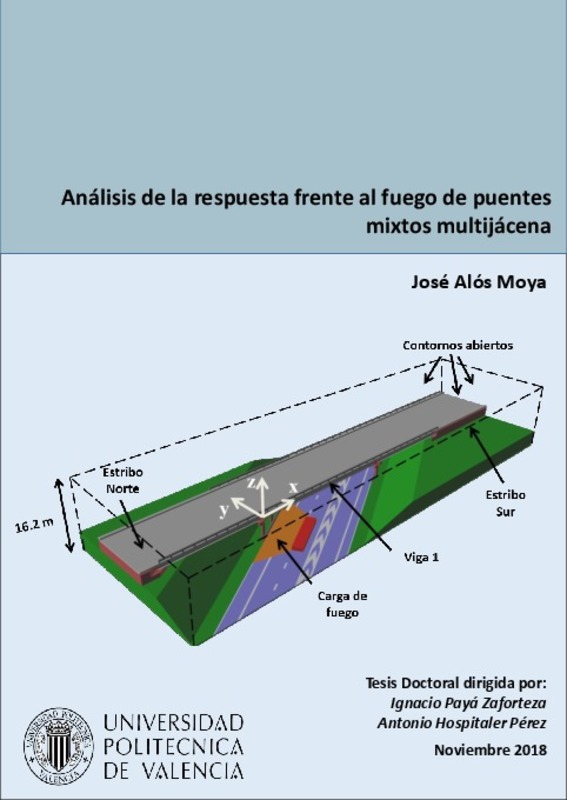JavaScript is disabled for your browser. Some features of this site may not work without it.
Buscar en RiuNet
Listar
Mi cuenta
Estadísticas
Ayuda RiuNet
Admin. UPV
Valencia bridge fire tests: Validation of simplified and advanced numerical approaches to model bridge fire scenarios
Mostrar el registro completo del ítem
Alós-Moya, J.; Paya-Zaforteza, I.; Hospitaler Pérez, A.; Loma-Ossorio, E. (2019). Valencia bridge fire tests: Validation of simplified and advanced numerical approaches to model bridge fire scenarios. Advances in Engineering Software (Online). 128:55-68. https://doi.org/10.1016/j.advengsoft.2018.11.003
Por favor, use este identificador para citar o enlazar este ítem: http://hdl.handle.net/10251/137599
Ficheros en el ítem
Metadatos del ítem
| Título: | Valencia bridge fire tests: Validation of simplified and advanced numerical approaches to model bridge fire scenarios | |
| Autor: | Alós-Moya, José Loma-Ossorio, E. | |
| Entidad UPV: |
|
|
| Fecha difusión: |
|
|
| Resumen: |
[EN] Bridge fires are a major concern and the subject of many studies that use numerical models. However, experimental studies are still required to test the validity of these numerical models and improve their accuracy. ...[+]
|
|
| Palabras clave: |
|
|
| Derechos de uso: | Reserva de todos los derechos | |
| Fuente: |
|
|
| DOI: |
|
|
| Editorial: |
|
|
| Versión del editor: | https://doi.org/10.1016/j.advengsoft.2018.11.003 | |
| Código del Proyecto: |
|
|
| Agradecimientos: |
Funding for this research was provided by the Spanish Ministry of Science and Innovation (Research Project BIA 2011-27104). The authors are grateful to the Infrastructure and Safety departments of the Universitat Politecnica ...[+]
|
|
| Tipo: |
|







![[Cerrado]](/themes/UPV/images/candado.png)




